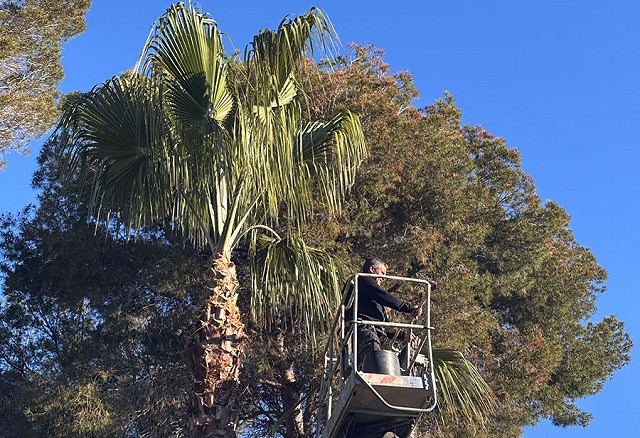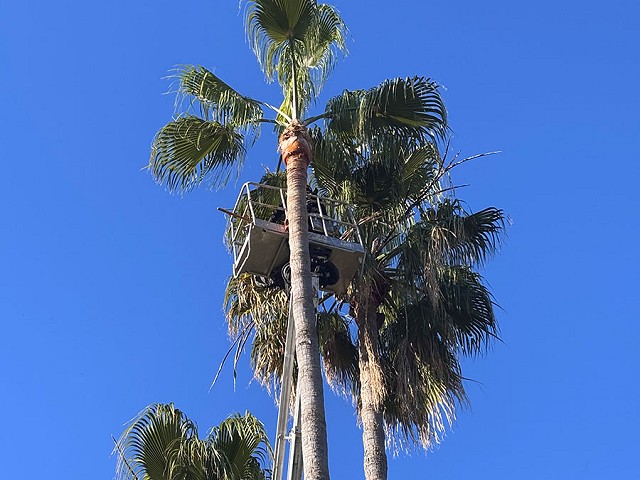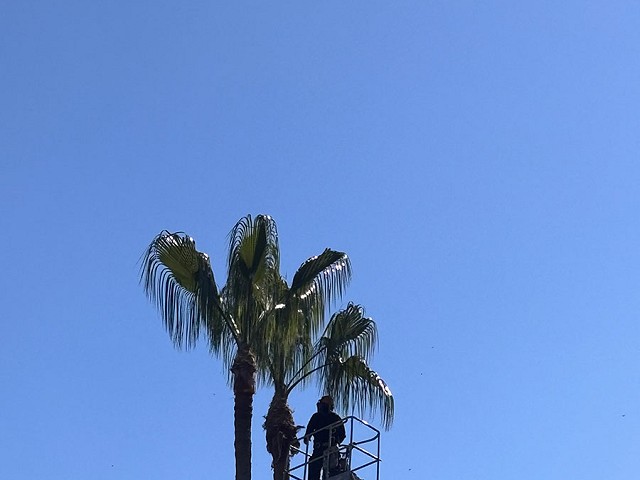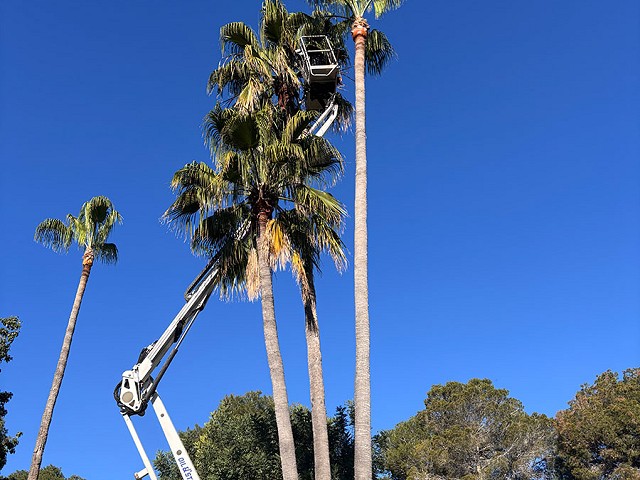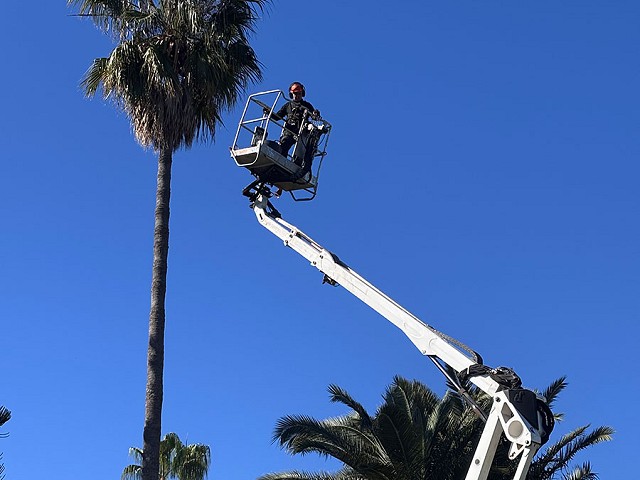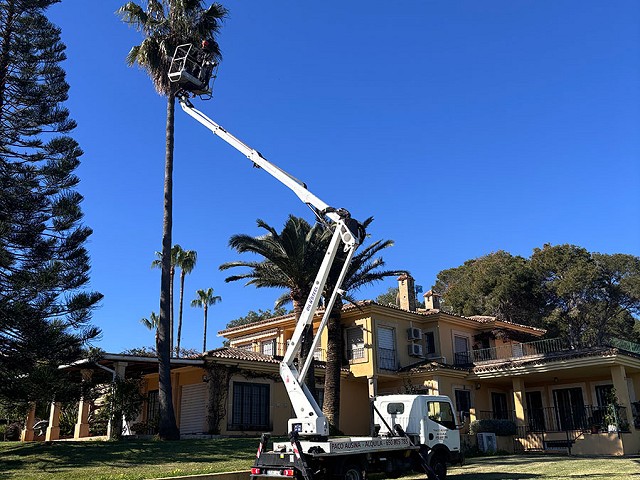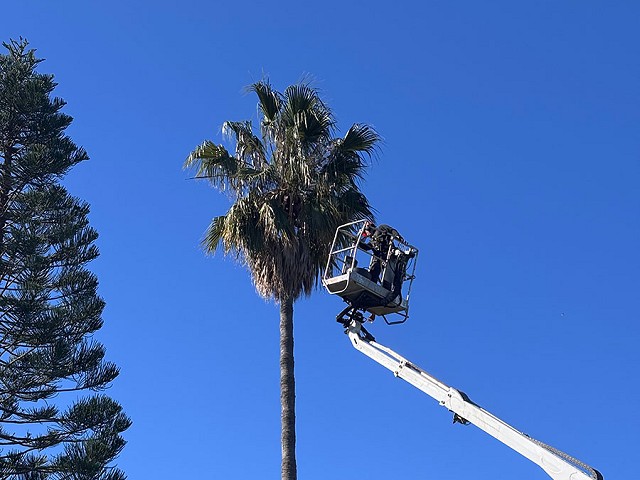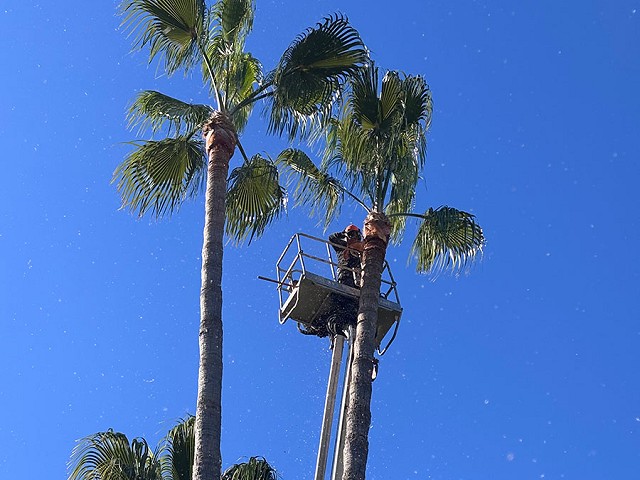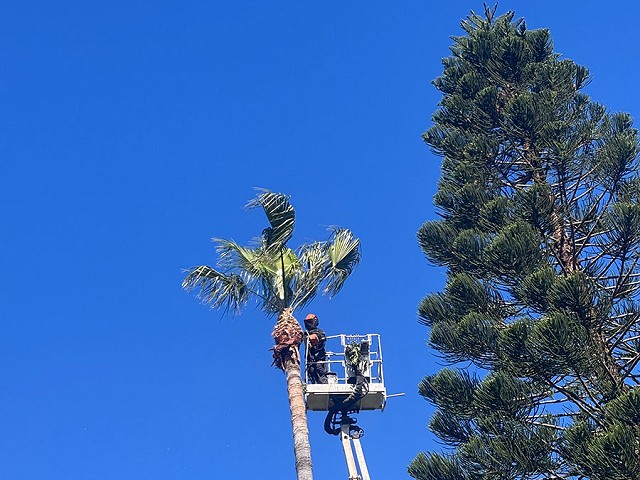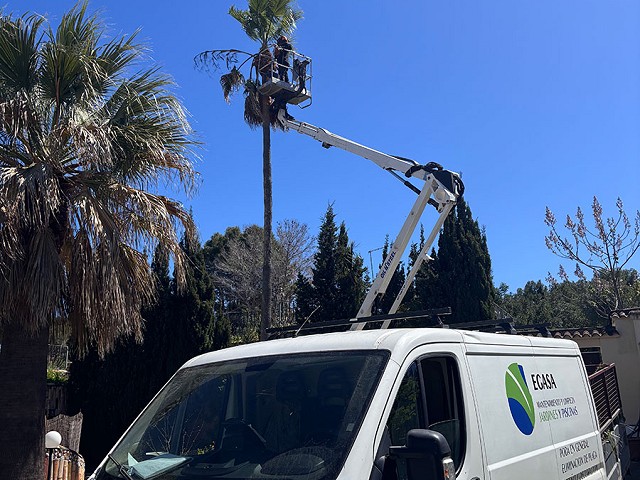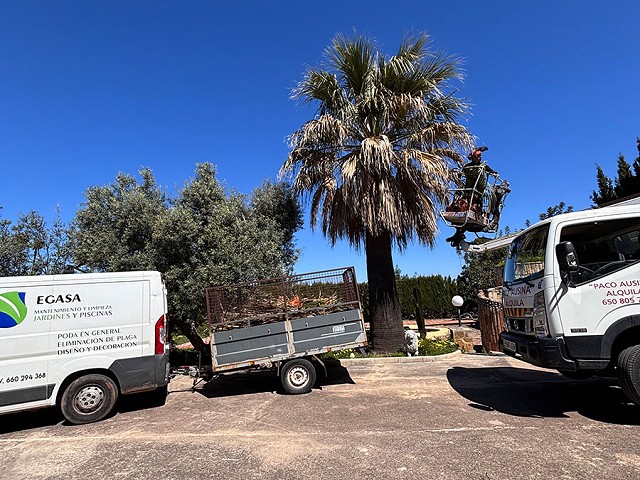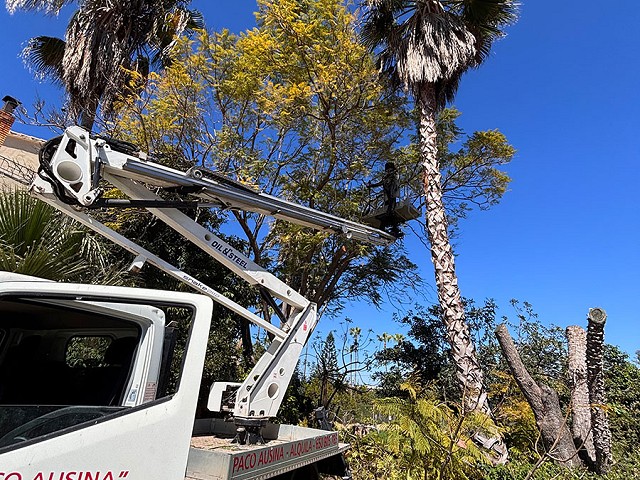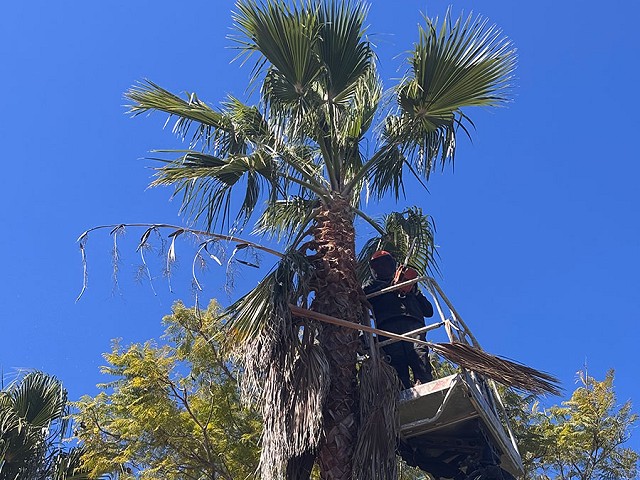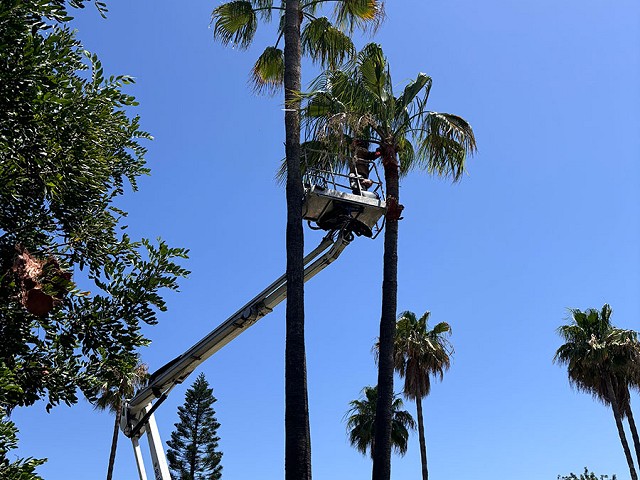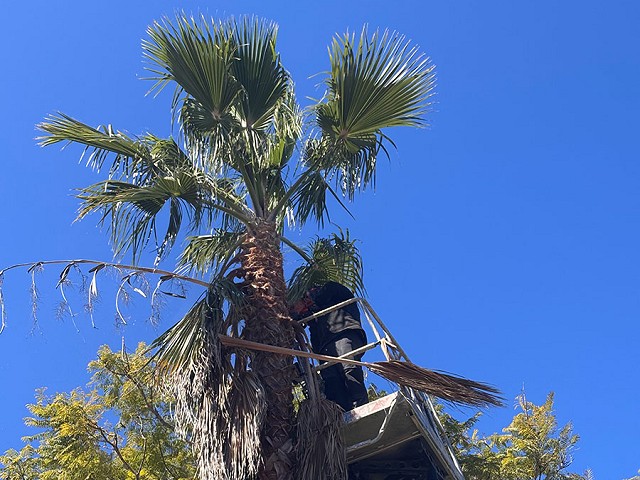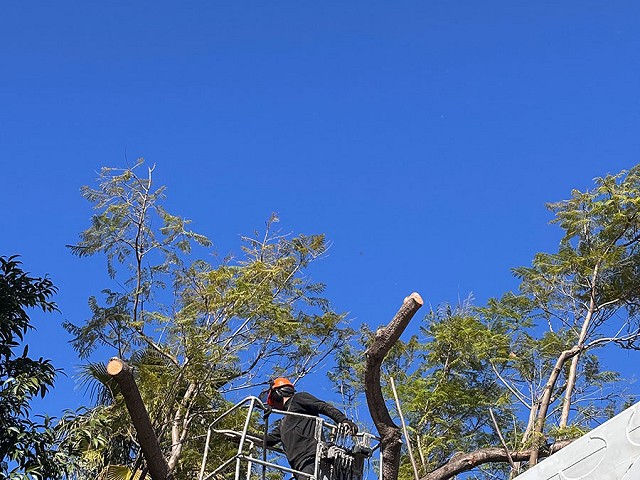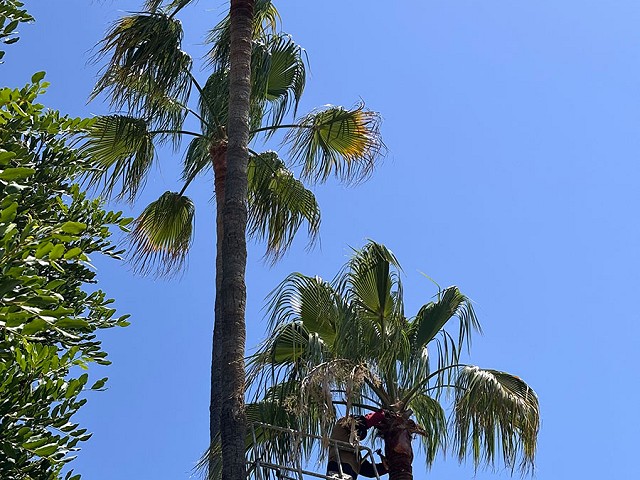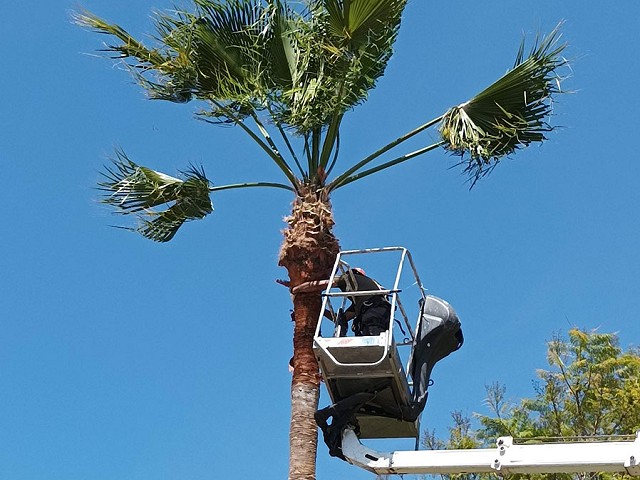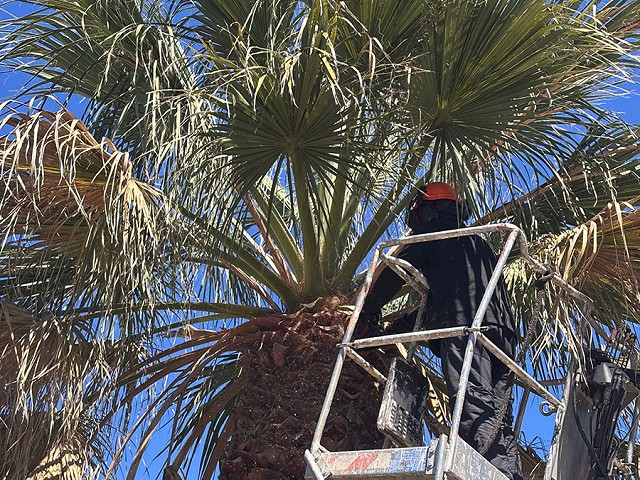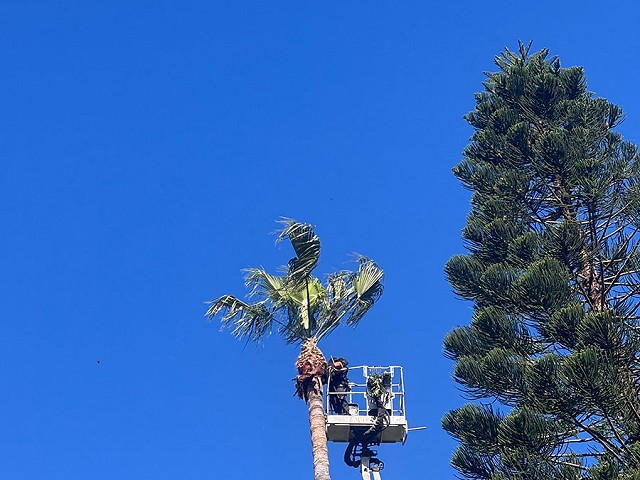Specialized pruning of "Washingtonia Robusta" in Finca Redos, Dénia
In egasa landscaping and gardening , we have recently executed a pruning project of 16 palm trees Washingtonia Robusta in Finca Redos, Dénia . Our approach focused on the application of professional techniques to ensure phytosanitary health and structural integrity of each specimen, contributing to the aesthetics and safety of the environment.
The intervention required the use of specialized equipment for safe and precise access. We use an elevator truck to reach the optimal height of work, complemented by manual tools such as chainsaw, saw, corvellón and firewalls. The pruning procedure included the selective elimination of:
- senescent or damaged fronds: those that had signs of desiccation, disease or physical damage, to prevent the spread of pathogens and improve the ventilation of the cup.
- remains of inflorescences and carpels: elimination of floral structures and past fructifications, which can accumulate dirt or serve as a refuge for pests.
- elements that compromised security: any part of the palm tree that represented a risk of detachment for people or goods.
- the relevance of pruning in spring: a technical approach
- The decision to make this pruning during spring is based on principles of plant physiology and integrated pest management. This period offers optimal conditions for the recovery of the palm tree:
- Metabolic activation: spring is the beginning of the active growth cycle of the robustonia. Pruning in this phase allows faster and faster healing of wounds, reducing the risk of entry of pathogenic organisms.
- Minimization of phytosanitary risk: When executing pruning before the full summer activity of insects and fungi, the exposure of freshly cut tissues to the colonization of pest is significantly decreased, such as the feared Rhychophorus ferrugineus (red sticker), whose activity is maximum in the hot months.
- preparation for the summer period: a palm tree pruned correctly in spring presents a cleaner and more resistant structure. This improves its ability to support the adverse climatic conditions of summer, such as high temperatures and strong winds, common in the Dénia region.
